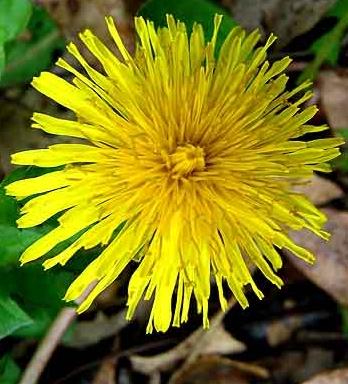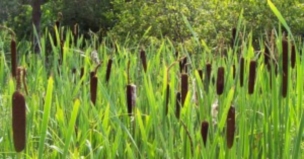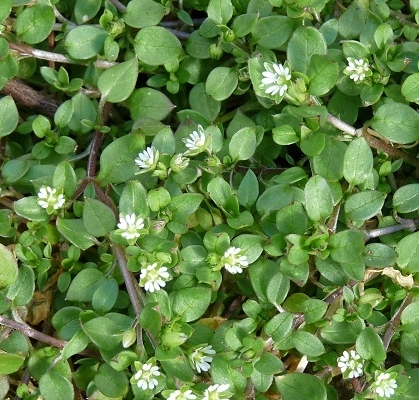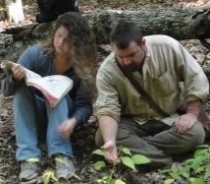Edible Wild Plants: Wild Plants You Can Eat For Survival
Food provision comes in many ways. Suppose you find yourself in a outdoor survival situation. Hunting or trapping is most definitely an option. However, obtaining wild plant foods is one of the most readily available food sources. Edible wild plants are often preferable food sources due to the ease with which you can harvest them. Unlike butchering a deer, some plants may not be safe to eat while others are bursting with goodness. You will want to provide protection to those with you, so it will be up to you to know what to do. Choosing edible wild plants and how to prepare them is an important skill to possess.
The most preferred method to collecting edibles is to study and research before you need them. This gives you the opportunity to eat healthy and study at the same time. If you have never considered the nutrition and abundance of wild plant life, here is a brief introduction to determining how to test edible wild plants, followed by three common wild delecies.
Ideally, you want to do as much as you can to prepare yourself to survive via foraging. To do that, you need to begin studying today. It isn’t like studying calculus. This is a much more fun subject and can actually be an exciting weekend activity for the whole family.
You will want to find a minimum of three reliable reference sources that have been well researched. These will be your go-to guides throughout your studying. Try and find sources that include artist renderings of each plant. Skilled artists tend to note minute details a camera lens would miss. Keep in mind, there are a lot of edible wild plants in the world and this will be an ongoing learning experience. You will also need a sketchbook to make notes and drawings of the plants you study. Your drawings do not need to be perfect. Do your best to note the characteristics of the plant and have fun.
The following is a brief overview of plant species testing and how to determine which wild plants you can eat. Please keep in mind that this testing is one of LAST RESORT. There is no better substitute than lots of field work with your reference books. This is also the method to utilize along with your research, after you have done your best to identify the species before going, “all in” and eating it. You must bear in mind that even after this test you run the risk of eating harmful plants. So again, we want to emphasize that this is a method you should not readily use. You should readily study and research first.
1-Topical
Rub a small piece of the unidentified plant on the inside of your wrist and forearm. Wait about 30 minutes and check to see if there is any redness, swelling or other indications your body is allergic to the plant. If there is any allergic-type response, do not eat the plant. It is safe to say that this is not safe to include this in your list of edible wild plants. If everything is okay, move on to step 2.
2-Oral
Place a small portion of the plant under your tongue. Wait another 30 minutes to see if there is any type of adverse response. Burning, tingling, difficulty breathing and pain are indicators the plant is not safe for you to eat. Extreme bitter or sour tastes may also suggest the plant is not suitable for consumption. If all is well, go on to step 3.
3-Ingest
Eat a small portion of the plant. You will need to wait a full 24 hours before you make a decision about whether the plant is safe to eat. Give the plant time to make it through your digestive tract. Diarrhea, nausea, cramps or any other uncomfortable side-effects suggest the plant is not for you as one of your edible wild plants.
Remember, moderation is the key with any food. Although you may think you are starving, please remember you can live for weeks without food. Do not try and rush this process or gorge on a plant once you deem it safe.
Here are three common species that are very easy to find for most who endeavor to start the process of “eatin’ weeds”.
Are Dandelions Edible?

Although dandelions seem to be the bane of beautiful lawns, they can be the answer to your food needs in certain survival situations. Dandelions are edible weeds. Admittedly, they are invasive and have earned a pretty nasty reputation, but they are truly very edible and very nutritious. Dandelions are hardy plants that grow pretty much anywhere the dirt has been disturbed in any way. This is great if you are starving and need something good to eat. And yes, dandelions are actually quite tasty despite being wild plants.
Here are a couple of pointers about dining on dandelions. Eating dandelions is all about personal preference. The leaves taste best in early spring before the yellow flowers bloom. After the flowers bloom, the leaves are bitter and tougher. Dandelion leaves are a wonderful tonic for your liver and will give your whole body a healthful boost. Once the flowers have bloomed, you can skip the leaves and munch on the flower heads. Just pick off the little green sepals from around the flower head to avoid that bitter flavor I mentioned.
The roots of the dandelion are edible too, making the whole plant a valuable food source. I will be honest here, the roots are pretty bitter, but they are packed full of fiber. If you are in need of some fiber, grab some dandelion roots.
Now that you know how good dandelion plants are, let’s talk about how to identify them.
- Very recognizable yellow flower
- Leaves have large teeth that grow away from the flower head
- The leaves grow in a basal rosette-style — all starting from the same point and move outward
- There are no hairs on the stalk or other part of the plant
As far as serving dandelions, you have several options. You can use the leaves and flowers in a salad and top them with your favorite dressing. You could also saute the flowers or dip them in batter and deep fry them. Dandelions are a lot like any other vegetable. Use your imagination and see what recipes you can come up with. In a survival situation, eat dandelions any way that you can get them.
Cattails

If you are fortunate enough to find yourself in a survival situation in an area where cattails grow wild, you have some good food on your side. Here is something you may or may not know: cattails are essentially nature’s answer to the grocery store.
Each part of the cattail is edible. In fact, you may even use the brown, bushy part of the cattail for a couple of different things like down filling or padding for a sleeping mat. Who needs a department store when you have a swamp full of cattails? You can watch this video to get a few tips about cattails and how they can be used in survival situations.
Cattails in the summer are pretty easily recognized. However, during the spring, they could be mistaken for an iris or daffodil plant. In the spring, rows of green seed pods are on the top of the plant where the brown bushy cattail will eventually bloom. When the tails are green, they are very tasty and can be eaten just like you would corn on the cob. You can add butter if you happen to have it to add even more flavor.
If you happen to be in a winter survival situation, you can eat the roots of the cattail plant. However, it is extremely important you DO NOT get into the water if it is cold outside. You will need to rely on the plants growing along the bank. In the video, you will see how to pull the roots up and strip back the outer portion to get to the edible portion of the plant. They are not exactly fine dining, but they do have valuable fuel for your body in the form of carbohydrates and starch.
Chickweed

For the next item on our list of edible wild plants, we are going to look at the common chickweed. This is a plant that is rather abundant, much to a yard keeper’s dismay. When chickweed grows, it is very copious. This will actually work to your benefit if chickweed is the only thing immediately available for eating.
Chickweed is a rather tasty little plant. It does not have any strong, bitter, or other undesirable flavors that many people find to be a turnoff. Before you go running off to the yard or field to hunt for chickweed, let me help you identify it correctly. There are some nasty, poisonous imposters that you want to make sure you avoid. Spotted Spurge and Scarlet Pimpernel resemble chickweed, but are definitely not the same.
Characteristics of Chickweed:
- Fine, white hairs on the stem of plant
- White, spade-shaped flowers
- 5 petals to each flower — it may look like 10 because of the deep indentation in the individual petals
Not only is chickweed edible, it is actually quite good for you. Nearly all the essential vitamins and minerals your body needs are packed into this little, low-lying plant.
Minerals
- Sodium
- Zinc
- Phosphorous
- Calcium
- Magnesium
- Iron
- Manganese
Vitamins
- A, C, D
- Niacin
- Thiamine
- Riboflavin
- Folic acid
Another major bonus to the chickweed is the ease in which it is harvested. As you continue to learn about survival, you will often hear experts talk about conserving your energy. Chickweed requires very little caloric expenditure, which makes it a great choice for food. Simply pull the plant up; it will come up rather easily, roots and all. You can eat the chickweed plain or throw it in a salad with a few other greens you are likely to find in a field or yard.
Now that you are versed in some edible wild plants, I encourage you to try these plants for yourself and learn first-hand which wild plants you can eat. However, these three wild plants are just the beginning; there are many tasty, nutritious plants growing wild and free. I encourage you to get your references and start learning how to recognize and also prepare wild plants.
About The Author
Craig Caudill is an outdoor survival enthusiast who teaches outdoor survival skills training online at Dan’s Depot and offline in the wilderness at his Nature Reliance School.





please note that the three step method for species testing is only a poor substitute for research and study into edible plants. I caution anyone reading my article here with that please. The best method for testing plants is to study them, research them, and train with a good instructor first whenever possible.
Do you have to steam the cat tails before you dry them In case of giardiasis or does it die off when the plant dries?